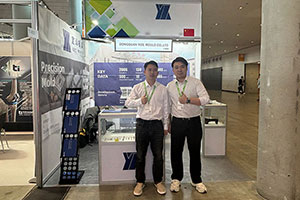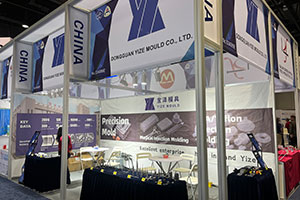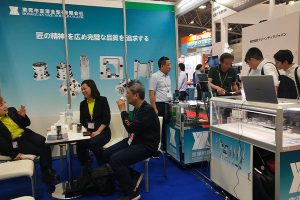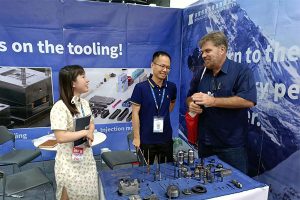Customization Cycle of Tungsten Carbide Die
I. Introduction In the vast field of industrial production, tungsten carbide dies have become an indispensable key tool in numerous manufacturing processes due to their excellent characteristics such as high […]
I. Introduction
In the vast field of industrial production, tungsten carbide dies have become an indispensable key tool in numerous manufacturing processes due to their excellent characteristics such as high hardness, high wear resistance, and high thermal stability. However, the customization cycle of tungsten carbide dies often resembles a dense fog, being affected by a variety of complex factors. This leads to uncertainty in delivery times and an increase in production costs. This article will delve into the influencing factors of the customization cycle of tungsten carbide dies and propose practical optimization suggestions, aiming to provide useful references for shortening the customization cycle and improving production efficiency.
II. Influencing Factors of the Customization Cycle of Tungsten Carbide Dies
(1) Design Complexity: A Tough Battle between Creativity and Time
The design complexity of tungsten carbide dies is like an invisible mountain blocking the path of the customization cycle. Complex die design is akin to painting a grand and detailed picture, requiring designers to invest a significant amount of time and energy in drawing blueprints. Every line and dimension must be precisely accurate, and process analysis needs to be extremely meticulous. The simulation verification process is also crucial and cannot be overlooked. Moreover, to meet the diverse and specific needs of customers, the design process often requires multiple modifications and optimizations. Each modification is like re-sketching on the canvas, not only consuming time but also potentially triggering a series of chain reactions, resulting in a continuous extension of the entire customization cycle.
Our factory business: carbide parts, mold parts, medical injection molds, precision injection molds, teflon PFA injection molding, PFA tube fittings. email: [email protected],whatsapp:+8613302615729.
(2) Material Supply and Processing Difficulty: Dual Challenges from the Supply Chain and Processing Technology
The supply situation of tungsten carbide materials is like a fragile chain. Once problems arise, they will disrupt the smooth operation of the entire customization cycle. If the material supply is tight, it is like a cook having no ingredients to work with, forcing the production progress to a halt. Unstable material quality, on the other hand, will cause various problems during subsequent processing, adding extra processing time and costs. At the same time, tungsten carbide materials themselves are highly difficult to process, similar to carving a hard rock, requiring special processing equipment and exquisite processing techniques. These special requirements not only increase the complexity and cost of processing but also inevitably extend the customization cycle.
(3) Manufacturing Process and Equipment: The Efficiency Gap between Advanced and Outdated Technologies
The advancement level of manufacturing processes and equipment is like the performance of a car engine, directly determining the length of the customization cycle of tungsten carbide dies. Advanced manufacturing processes and equipment are like high-speed trains, capable of completing processing tasks with higher precision and efficiency, greatly shortening the customization cycle. For example, high-precision CNC machine tools can precisely control each processing step, laser cutting machines can quickly and accurately cut materials, and 3D printing technology can achieve one-step molding of complex structures. However, suppose the manufacturing processes are outdated or the equipment is old. In that case, it is like an old horse-drawn carriage, with low processing efficiency and prone to various failures and errors, leading to a significant extension of the customization cycle.
(4) Production Planning and Resource Allocation: The Art of Coordination and planning
The rationality of production planning and resource allocation is the key to ensuring the smooth progress of the customization cycle of tungsten carbide dies. If the production plan is unreasonable, it is like fighting a battle without a plan, leading to various bottlenecks and delays during the production process. Improper resource allocation is like dispersing limited troops across multiple battlefields, unable to form effective combat effectiveness. In addition, unexpected situations and problems during the production process are like hidden reefs in the dark, which may strike at any time collide with the “ship” of the customization cycle, causing it to deviate from the predetermined route and extend the delivery time.
(5) Customer Requirements and Communication: The “Fog” and “Deviation” in Information Transmission
The clarity of customer requirements and the efficiency of communication with suppliers are invisible factors affecting the customization cycle of tungsten carbide dies. If customer requirements are unclear, it is like groping in the dark, making it difficult for designers and production personnel to accurately grasp the direction, leading to frequent design modifications and repeated processing. Frequent changes in customer requirements are like constantly changing the course during navigation, throwing the entire customization process into chaos and significantly extending the customization cycle. At the same time, poor communication or inaccurate information between the customer and the supplier is like signal interference in radio communication, leading to misunderstandings and wrong decisions, further delaying the customization cycle.
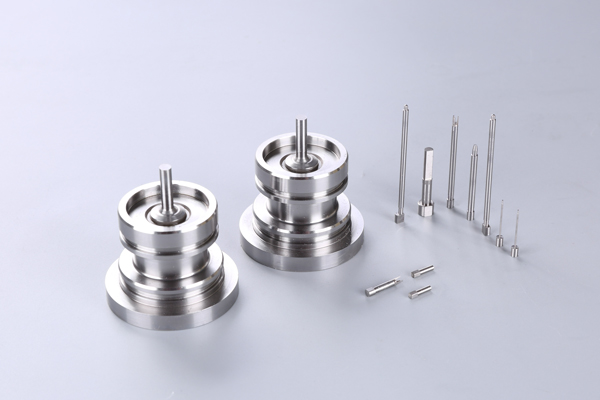
III. Optimization Strategies
(1) Improving Design Efficiency: Empowering with Technology and Leading with Norms
To improve the design efficiency of tungsten carbide dies, we can leverage advanced CAD/CAM technology to equip the design process with a “booster”. These technologies can quickly draw and modify design blueprints, greatly shortening the design cycle. At the same time, establishing standardized design specifications and databases is like providing designers with an “encyclopedia”, reducing repetitive work and errors during the design process. In addition, strengthening communication with customers is crucial. By thoroughly understanding customer requirements in advance and clarifying the design direction, we can avoid frequent design modifications and repeated processing in the later stages, making the design process more efficient and smooth.
(2) Optimizing Material Supply and Processing Flow: Ensuring Stable Supply and Efficient Processing
To address the issues of material supply and processing difficulty, we can take a series of optimization measures. First, establish long-term cooperative relationships with reliable suppliers, like building a sturdy bridge, to ensure the stability and quality of material supply. Second, introduce advanced processing equipment and techniques to inject powerful momentum into the processing process, improving the processing efficiency and quality of tungsten carbide materials. Finally, comprehensively optimize and simplify the processing flow, removing unnecessary waiting times and non-value-added links, making the processing process as smooth as a flowing river.
(3) Introducing Advanced Manufacturing Processes and Equipment: Leading Production Transformation with Technology
To improve the customization efficiency of tungsten carbide dies, we must keep pace with technological development and actively introduce advanced manufacturing processes and equipment. High-precision CNC machine tools, laser cutting machines, 3D printing technology, and other advanced equipment and techniques are like “magic wands” in industrial production, capable of completing processing tasks with amazing precision and efficiency. At the same time, strengthen employee training and technical updates to enable employees to master the use of these advanced equipment and techniques, like equipping soldiers with sophisticated weapons, improving the combat effectiveness of the entire production team.
(4) Rationally Formulating Production Plans and Allocating Resources: Scientific Planning and Precise Scheduling
Rationally formulating production plans and allocating resources is an important guarantee for shortening the customization cycle of tungsten carbide dies. First, formulate a scientific and reasonable production plan based on customer requirements and market forecasts, like drawing a detailed navigation map for navigation, clarifying the goals and tasks at each stage. Second, allocate human, material, and financial resources reasonably according to the production plan and resource situation to ensure that each link receives sufficient support. Finally, strengthen monitoring and management during the production process by establishing a real-time feedback mechanism, and promptly identify and resolve issues to maintain control over the production process at all times.
(5) Strengthening Communication and Collaboration with Customers: Sharing Information and Solving Problems Together
To shorten the customization cycle of tungsten carbide dies, we must strengthen communication and collaboration with customers. First, clarify customer requirements and accurately convey them to the design and production departments to ensure that the entire team is working towards the same goal. Second, regularly communicate with customers about project progress and quality, keeping customers informed of the project’s development at all times, promptly solving problems and addressing concerns raised by customers, and enhancing customer trust and satisfaction. Finally, establish a customer feedback mechanism to collect customers’ opinions and suggestions on the products, providing a basis for subsequent improvements and optimizations and forming a virtuous cycle.
IV. Conclusion
The customization cycle of tungsten carbide dies is influenced by a variety of factors, including design complexity, material supply and processing difficulty, manufacturing process and equipment, production planning and resource allocation, as well as customer requirements and communication. To shorten the customization cycle and improve production efficiency, we can take measures such as improving design efficiency, optimizing material supply and processing flow, introducing advanced manufacturing processes and equipment, rationally formulating production plans and allocating resources, and strengthening communication and collaboration with customers. These measures are interrelated and mutually reinforcing, and will jointly promote the shortening of the customization cycle of tungsten carbide dies, enhance the production efficiency and market competitiveness of enterprises, and enable them to stand firm in the fierce market competition.


